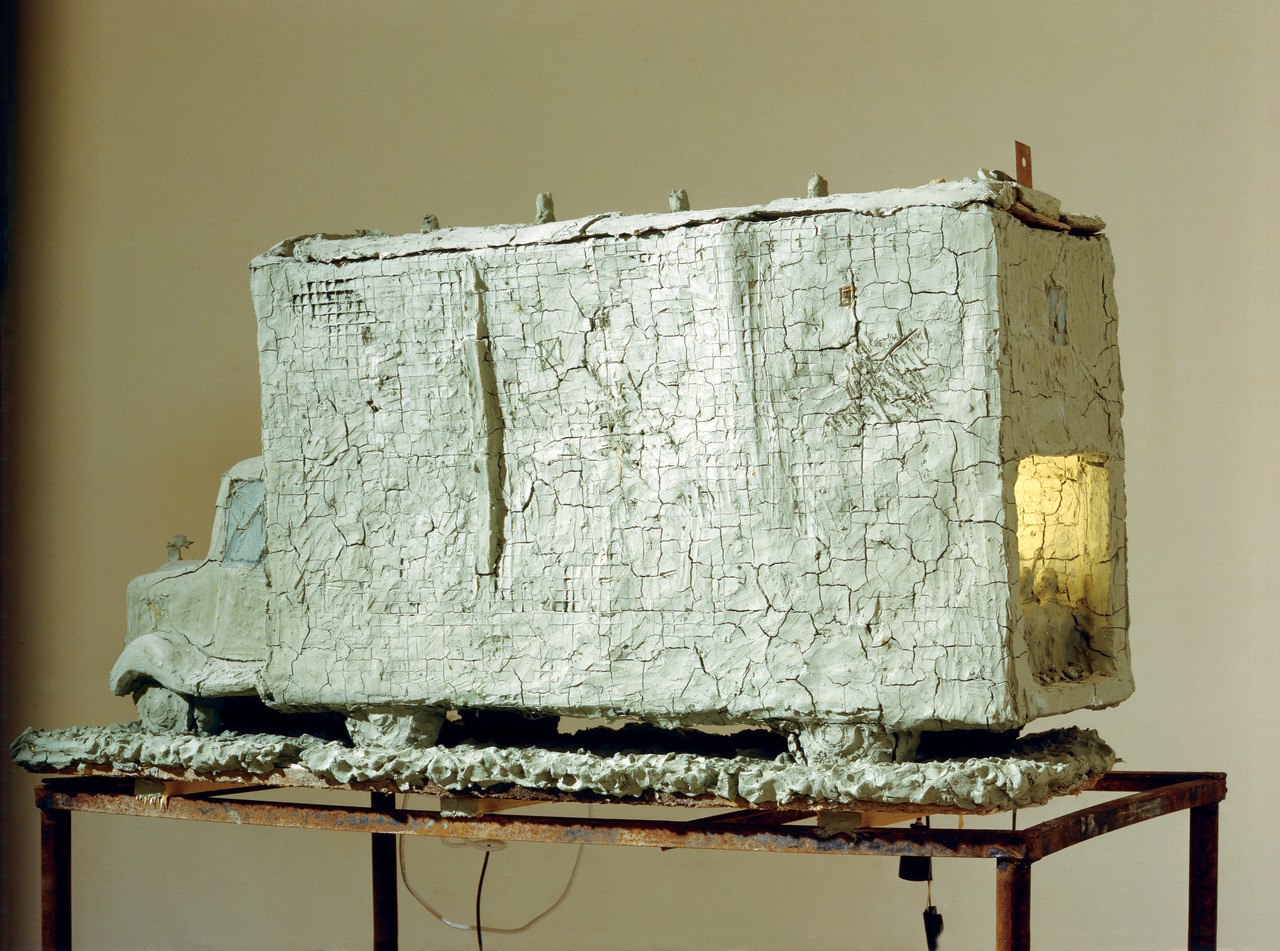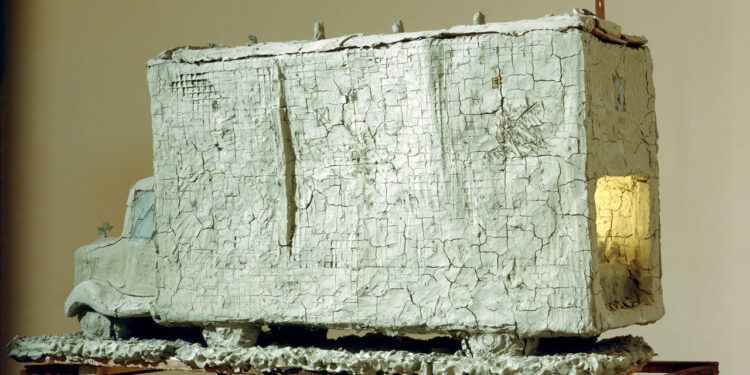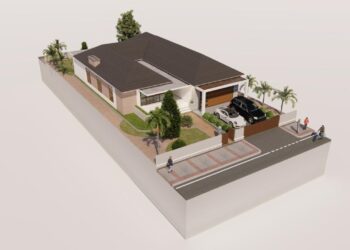Exploring the fusion of tradition and innovation in architecture, this piece delves into the unique approach of Alexander Brodsky. Known for his distinctive style, Brodsky seamlessly merges historical elements with contemporary flair, creating a captivating narrative in each of his projects.

Detailing his background, notable works, and the influence of Russian culture, this discussion sheds light on the intricate balance Brodsky strikes between the old and the new.
Overview of Alexander Brodsky's work
Alexander Brodsky is a renowned Russian architect known for his unique blend of tradition and innovation in his architectural designs. Born in Moscow in 1955, Brodsky initially trained as a sculptor before transitioning to architecture. His work often reflects a deep appreciation for Russian culture and history, incorporating elements of the past into contemporary structures.
Alexander Brodsky's Notable Projects
Alexander Brodsky's architectural style is characterized by a focus on craftsmanship, materiality, and storytelling. He often repurposes salvaged materials and incorporates them into his designs, creating a sense of nostalgia and authenticity. One of his most famous projects is the Garage Center for Contemporary Culture in Moscow, where he transformed a Soviet-era restaurant into a modern art space while preserving its historical features.
Another notable project is the installation "Gorky Park. Garage" in Gorky Park, Moscow, where Brodsky used wooden panels to create a temporary pavilion that paid homage to the park's history. This project exemplifies his ability to merge traditional building techniques with contemporary aesthetics.
Influence of Russian Culture and History
Alexander Brodsky's work is deeply rooted in Russian culture and history, drawing inspiration from the country's rich architectural heritage. His designs often reference traditional Russian wooden architecture, such as izbas (log houses) and dachas (summer houses), reinterpreting these forms in a modern context.
By incorporating elements of Russian folklore, history, and everyday life into his projects, Brodsky creates a sense of place and identity that resonates with audiences both in Russia and abroad. His work serves as a bridge between the past and the present, showcasing the enduring relevance of traditional craftsmanship in contemporary architecture.
Traditional elements in Alexander Brodsky's architecture
Alexander Brodsky's architecture is known for blending traditional elements with innovative designs, creating a unique and timeless aesthetic. By incorporating specific traditional architectural elements into his work, Brodsky pays homage to the rich history of Russian architecture while infusing it with a contemporary twist.
Use of Wood
One of the traditional elements frequently seen in Brodsky's architecture is the use of wood. He often integrates wooden elements such as beams, columns, and facades into his modern designs, bringing warmth and a sense of tradition to his structures.
Architectural Ornamentation
Brodsky also incorporates intricate architectural ornamentation inspired by traditional Russian motifs. These ornate details add a layer of cultural richness to his buildings while showcasing the craftsmanship of the past in a modern context.
Traditional Building Techniques
In his work, Brodsky explores traditional building techniques like timber framing and brick masonry, adapting them to contemporary construction practices. By preserving these time-honored methods, he not only connects to the architectural heritage of Russia but also highlights the importance of craftsmanship in today's architecture.
Innovative approaches in Alexander Brodsky's designs
Alexander Brodsky is known for his innovative approaches in architectural designs, blending tradition with modernity. His unique design techniques and materials set him apart in the field of architecture, pushing boundaries while still respecting traditional elements.
Use of Found Objects and Salvaged Materials
Alexander Brodsky often incorporates found objects and salvaged materials in his designs, giving new life to old elements. This approach not only adds a layer of history and nostalgia to his projects but also showcases his creativity in repurposing materials.
Sculptural Elements in Architecture
Brodsky's architectural projects often feature sculptural elements that challenge traditional notions of form and structure. By incorporating these unique design elements, he creates visually striking buildings that stand out in the urban landscape.
Exploration of Spatial Relationships
Another innovative aspect of Brodsky's designs is his exploration of spatial relationships within architectural spaces. He plays with light, shadow, and volume to create dynamic environments that engage the senses and challenge the viewer's perception of space.
Balancing tradition and innovation in architectural design
Tradition and innovation are two essential elements in architectural design that can either clash or complement each other. Alexander Brodsky has successfully found a way to blend these two aspects in his work, creating unique and captivating designs that pay homage to tradition while embracing modernity.
Comparison with other architects
When compared to other architects, Brodsky's approach to blending tradition and innovation stands out for its seamless integration of old and new elements. While some architects may prioritize either tradition or innovation in their designs, Brodsky manages to strike a delicate balance between the two, resulting in designs that are both timeless and cutting-edge.
Challenges of incorporating traditional elements
Incorporating traditional elements into modern architecture can pose several challenges. One of the main obstacles is ensuring that the traditional elements do not overshadow or clash with the innovative aspects of the design. Brodsky navigates this challenge by carefully selecting which traditional elements to incorporate and finding creative ways to merge them with modern features seamlessly.
Examples of successful integration
One notable example of successful integration of tradition and innovation in architectural projects is Brodsky's Garage Center for Contemporary Culture in Moscow. The building combines traditional brickwork with modern glass and steel elements, creating a harmonious blend of old and new.
Another example is Brodsky's Venice Biennale Pavilion, where he used traditional wooden boat-building techniques to create a striking contemporary structure.
Epilogue
In conclusion, the legacy of Alexander Brodsky's architectural endeavors resonates through his masterful blend of tradition and innovation. Each structure stands as a testament to his ability to harmonize the past with the future, leaving a lasting impact on the world of architecture.
Helpful Answers
How does Alexander Brodsky integrate traditional elements into his modern designs?
Brodsky incorporates traditional architectural elements by reimagining them in a contemporary context, preserving their essence while infusing a modern twist.
What sets Brodsky's innovative design techniques apart from others in the field?
Brodsky's innovative approaches often involve unconventional materials and spatial concepts, challenging conventional norms while staying rooted in tradition.
Can you provide examples of successful integration of tradition and innovation in Brodsky's projects?
Projects like [Project Name] and [Project Name] showcase Brodsky's seamless blend of traditional and innovative elements, creating architectural marvels that stand the test of time.
 Detailing his background, notable works, and the influence of Russian culture, this discussion sheds light on the intricate balance Brodsky strikes between the old and the new.
Detailing his background, notable works, and the influence of Russian culture, this discussion sheds light on the intricate balance Brodsky strikes between the old and the new.
 Detailing his background, notable works, and the influence of Russian culture, this discussion sheds light on the intricate balance Brodsky strikes between the old and the new.
Detailing his background, notable works, and the influence of Russian culture, this discussion sheds light on the intricate balance Brodsky strikes between the old and the new.


![What Is a Business Line of Credit? + How They Work [2024 Guide]](https://exterior.radarbanten.co.id/wp-content/uploads/2025/09/7e98df9b7c8f53d086c1f17d112407f3-75x75.jpg)









